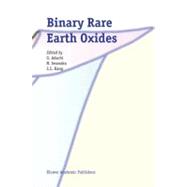
What is included with this book?
| 1. Introduction | |||||
|
1 | (8) | |||
|
|||||
|
|||||
|
|||||
| 2. Chemical Reactivity of Binary Rare Earth Oxides | |||||
|
9 | (48) | |||
|
|||||
|
|||||
|
|||||
|
|||||
|
|||||
|
|||||
|
|||||
|
|||||
|
|||||
|
|||||
|
|||||
|
|||||
|
|||||
| 3. Structural Features of Rare Earth Oxides | |||||
|
57 | (38) | |||
|
|||||
|
|||||
|
|||||
|
|||||
|
|||||
|
|||||
|
|||||
|
|||||
|
|||||
|
|||||
|
|||||
|
|||||
|
|||||
|
|||||
|
|||||
|
|||||
|
|||||
| 4. Chemical Bonds and Calculation Approach to Rare Earth Oxides | |||||
|
95 | (16) | |||
|
|||||
|
|||||
|
|||||
| 5. Physical and Chemical Properties of Rare Earth Oxides | |||||
|
111 | (24) | |||
|
|||||
|
|||||
|
|||||
|
|||||
| 6. Particles and Single Crystals of Rare Earth Oxides | |||||
|
135 | (28) | |||
|
|||||
|
|||||
|
|||||
|
|||||
|
|||||
|
|||||
|
|||||
|
|||||
|
|||||
|
|||||
|
|||||
|
|||||
|
|||||
|
|||||
|
|||||
|
|||||
|
|||||
| 7. Thermochemistry of Rare Earth Oxides | |||||
|
163 | (26) | |||
|
|||||
|
|||||
|
|||||
|
|||||
|
|||||
|
|||||
|
|||||
|
|||||
|
|||||
|
|||||
|
|||||
|
|||||
|
|||||
|
|||||
|
|||||
|
|||||
|
|||||
| 8. Trace and Ultratrace Determination of Lanthanides in Material and Environmental Samples | |||||
|
189 | (26) | |||
|
|||||
|
|||||
|
|||||
|
|||||
|
|||||
|
|||||
|
|||||
|
|||||
|
|||||
|
|||||
|
|||||
|
|||||
|
|||||
|
|||||
| 9. Applications | |||||
|
215 | (42) | |||
|
|||||
|
|||||
|
|||||
|
|||||
|
|||||
|
|||||
|
|||||
|
|||||
|
|||||
|
|||||
|
|||||
|
|||||
|
|||||
|
|||||
|
|||||
|
|||||
|
|||||
|
|||||
|
|||||
|
|||||
|
|||||
|
|||||
|
|||||
|
|||||
|
|||||
|
|||||
|
|||||
| 10. Concluding Remarks | |||||
|
257 |
The New copy of this book will include any supplemental materials advertised. Please check the title of the book to determine if it should include any access cards, study guides, lab manuals, CDs, etc.
The Used, Rental and eBook copies of this book are not guaranteed to include any supplemental materials. Typically, only the book itself is included. This is true even if the title states it includes any access cards, study guides, lab manuals, CDs, etc.